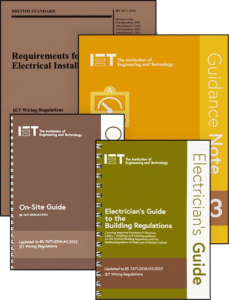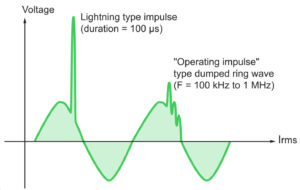Let's get straight to the nitty-gritty! Here are the questions get asked the most - the bit you probably want to read first! If you'd like a full explanation of Surge Suppressors, please scroll down to the bottom of the FAQ.
- Do Surge Suppressors really work?
Absolutely! They are an effective way of protecting your electrical installation, and whatever is connected to it.
- Can a Surge Suppressor protect against lightning?
A surge protector is designed to safeguard against nearby lightning strikes, but it is important to note that it may not be effective against a direct strike.
- What level of protection do they offer?
Using a good quality Surge Suppressor can offer protection against all but the most destructive of events.
- Are some Surge Suppressors better than others?
Yes. The suppressors in “socket strips” are of limited use. For higher levels of protection, a “whole installation” protector is the better choice.
- What are the limitations of Surge Suppressors? Can a surge protector be overwhelmed by a large surge?
A Surge protector is not designed to deal with the largest surges, for example a direct lightning strike.
- What does the joule rating mean? How many joules do I need?
The Joule rating is the “Strength” of the Surge Protector. 200 Joules can offer excellent protection against most surges.
- What is clamping Voltage? What's a good clamping Voltage?
The clamping Voltage is the maximum Voltage the suppressor will allow to pass, and needs to be carefully chosen. This should be somewhat above the nominal supply Voltage, but not so high as to be ineffective.
- Do I need surge protection for all my electronics? Which devices are most important to protect?
It’s wise to protect anything electronic. A Plug In Surge Suppressor automatically protects everything in the boat/caravan.
- Should I use a surge protector for refrigerators or washing machines?
Yes. Although refrigerators, washing machines etc are quite “hardy”, they are capable of causing power surges or spikes. A Plug In Surge Suppressor greatly reduces the magnitude of these spikes, so no further suppression is needed.
- Do Surge Suppressors wear out?
Eventually, usually after years of use, a Surge Suppressor can lose its effectiveness, so it’s worthwhile having your Surge Suppressor checked periodically, say every five years.
- How do I know if my Surge Suppressor has stopped working?
Surge Suppressors have a long life, but if a Surge Suppressor stops working, it would normally operate the electrical trip.
- Are there any maintenance requirements for Surge Suppressors, and when should a surge suppressor be replaced?
Periodically check that the casing, cable and connectors haven’t been damaged. If any damage, burning, cracks are noticed, these would need further investigation.
- Can I install a surge protector myself?
Of course! Our Surge Protectors are Plug & Play, and can be self-installed in a matter of seconds.
- Do Surge Suppressors need to be grounded properly to work?
Yes. A Plug In Surge Suppressor will take its ground from the connecting cable, which invariably has an integral earth conductor.
All (Well nearly all) about Surge Suppressors
An electrical Surge Suppressor, also known as a surge protector, is a device designed to protect electrical equipment from Voltage spikes or surges.
These surges can occur for various reasons, such as nearby lightning strikes, fluctuations in the electrical grid, and commonly from electrical appliances automatically switching loads, for example Microwaves, Heating Controllers, Washing Machines etc. The list is endless.
Fortunately, most power surges are quite small, and insignificant, but occasionally, a much larger surge appears on the power line - large enough to cause damage to electrical installations and equipment, such as computers, TVs, etc., Even heating controllers, microwaves and washing machines can be affected, as these days, almost every gadget in our homes, caravans and boats have some sort of computer control system inside them, which makes them especially vulnerable to power variations. LED lighting seems to be especially vulnerable, with LED lamps "Guaranteed for 30,000 hours", dying after next to no use.
 Since 2019, the UK Wiring Regulations require the installation of surge protection in new electrical systems, underscoring the growing importance of safeguarding against power surges. Whilst it’s not a legal requirement to fit a suppressor in a caravan or boat, it certainly makes a lot of sense to do so. After all, it is believed that around 60% of electrical equipment failures can be attributed to “transient Voltage events”, (Power Spikes to you and me).
Since 2019, the UK Wiring Regulations require the installation of surge protection in new electrical systems, underscoring the growing importance of safeguarding against power surges. Whilst it’s not a legal requirement to fit a suppressor in a caravan or boat, it certainly makes a lot of sense to do so. After all, it is believed that around 60% of electrical equipment failures can be attributed to “transient Voltage events”, (Power Spikes to you and me).
The problem is that Surge Suppressors are normally fitted inside the consumer unit (fuse box), and that's rarely an option on caravans, motorhomes and boats.
 A Surge Suppressor is a relatively simple device that uses one or more Metal Oxide Varistors made from a ceramic material containing metal oxides, which gives them special electrical properties. Metal Oxide Varistors (MOVs), have a “Clamping Voltage”. If the Clamping Voltage is exceeded, the MOV directs the overvoltage safely to Earth, protecting your equipment. The most basic Surge Suppressors have a single MOV. (Ours are fitted with three MOVs for the best protection). One of the MOVs is connected between Live & Earth, another between Live and Neutral, and a third between Live and Neutral.
A Surge Suppressor is a relatively simple device that uses one or more Metal Oxide Varistors made from a ceramic material containing metal oxides, which gives them special electrical properties. Metal Oxide Varistors (MOVs), have a “Clamping Voltage”. If the Clamping Voltage is exceeded, the MOV directs the overvoltage safely to Earth, protecting your equipment. The most basic Surge Suppressors have a single MOV. (Ours are fitted with three MOVs for the best protection). One of the MOVs is connected between Live & Earth, another between Live and Neutral, and a third between Live and Neutral.
When a power surge comes along, the MOVs instantly become very low resistance for as long as the surge lasts, and return to their normal high resistance state afterward. This all happens in an instant, usually without you even noticing.
How to connect it...
 We have designed a Surge Suppressor especially for caravans, motorhomes and boats. It simply plugs in to your power hookup cable, and instantly provides a high level of protection for the vehicles electrical system and appliances. The Surge Suppressor will be effective at either end of the electric hookup cable. For the very best results, we recommend installing it at the end connected to the caravan or boat. This is because a long hookup cable can act like an antenna, picking up electrical interference.
We have designed a Surge Suppressor especially for caravans, motorhomes and boats. It simply plugs in to your power hookup cable, and instantly provides a high level of protection for the vehicles electrical system and appliances. The Surge Suppressor will be effective at either end of the electric hookup cable. For the very best results, we recommend installing it at the end connected to the caravan or boat. This is because a long hookup cable can act like an antenna, picking up electrical interference.
By placing the Surge Suppressor close to the caravan/boat, it can more effectively block any electrical disturbances. The plug in Surge Suppressor is far more effective than using a socket strip with suppressor, because it protects the entire installation, whatever is plugged into it, including permanently wired items, whereas a socket strip only protects what’s plugged into it.
How to Choose a Surge Suppressor
Surge suppressors are rated according to their capacity to absorb energy from electrical surges. This capacity can be measured in Amps, which is the maximum current the device can handle. Another common, but less intuitive rating is Joules, which reflects both the magnitude of the surge and its duration. A good surge protector should have a current rating in excess of 4,000 Amps. (As a guide, the varistors in our models are rated at 4,500 Amps, with a combined capacity exceeding 200 Joules).
Where to Get a Surge Suppressor
Where to Get Your Surge Suppressor
To the best of our knowledge, we are the only UK manufacturer of Surge Suppressors. You can check them out <HERE>



